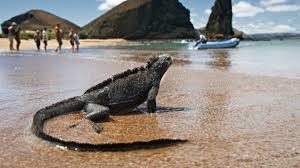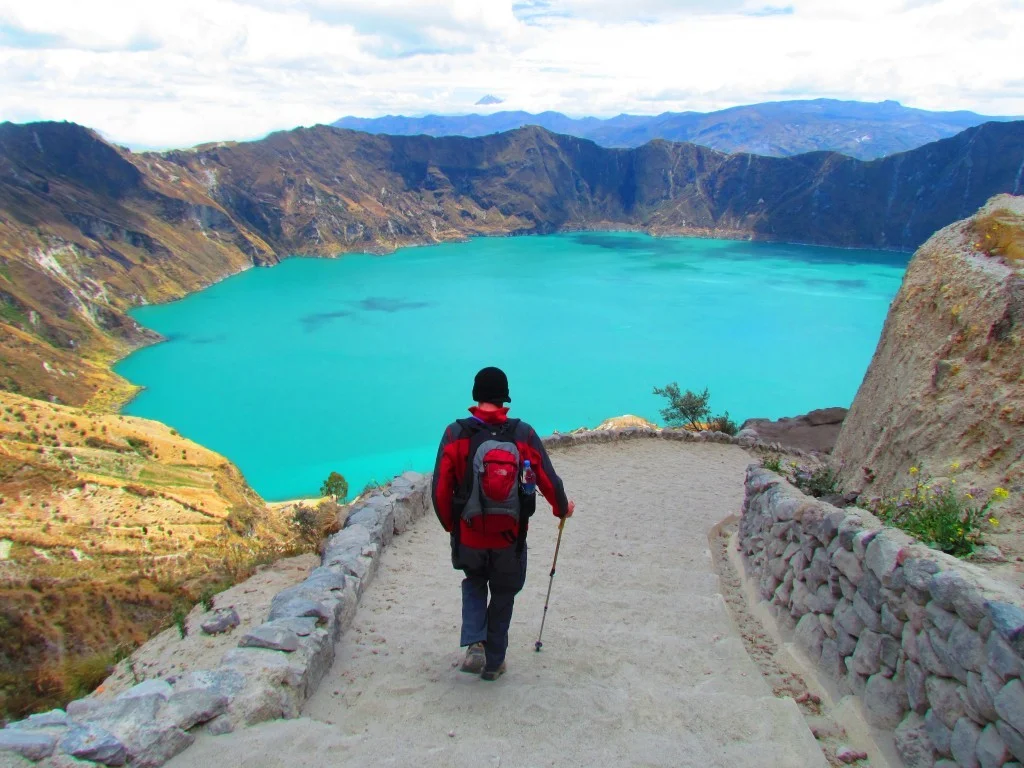Imagine stepping into a world where time seems to stand still, where nature thrives in its purest form, and where every corner reveals a new wonder. Welcome to the Galápagos Islands, a mystical archipelago off the coast of Ecuador. Known for its breathtaking landscapes and unique wildlife, these islands have long captured the imagination of travelers and scientists alike. From the iconic giant tortoises to the playful sea lions, the Galápagos Islands offer an unparalleled glimpse into the wonders of evolution and biodiversity.
For travelers seeking an adventure like no other, the Ecuador’s Galápagos Islands promise not only stunning natural beauty. But also a rich tapestry of history and science. It was here that Charles Darwin’s observations laid the groundwork for his revolutionary theory of natural selection. And forever changing our understanding of life on Earth. Today, the islands continue to be a living laboratory. Drawing visitors from around the globe eager to explore its unique ecosystems and pristine beaches.
But why should you consider visiting the Galápagos Islands? Beyond the chance to witness their extraordinary wildlife, a trip to this UNESCO World Heritage Site offers a rare opportunity to disconnect from the hustle and bustle of modern life and reconnect with nature. Whether you’re hiking across volcanic landscapes, snorkeling with vibrant marine life, or simply enjoying the serene beauty of the islands. A journey to the Galápagos is a transformative experience.
As you plan your adventure, it’s essential to know what awaits you in this ecological paradise. From the best times to visit and must-see attractions to tips on sustainable travel, our comprehensive guide will provide you with all the information you need for an unforgettable trip to the Galápagos Islands. So, pack your bags and get ready to embark on a journey of discovery and wonder.
Discover the Unique Wildlife of the Galápagos
The Galápagos Islands are a treasure trove of biodiversity. Home to an array of species that can’t be found anywhere else on Earth. This archipelago, part of Ecuador’s Galápagos Islands, serves as a living laboratory of evolution. Where unique wildlife thrives in isolation. Many of the species here are endemic, meaning they have evolved distinct characteristics that set them apart from their mainland relatives.
Among the most iconic inhabitants are the giant tortoises. They have become a symbol of the islands. These gentle giants can weigh up to 417 kg (919 lbs) and live for over 100 years. The Galápagos is also the only place on the planet where you can find marine iguanas. The world’s only sea-foraging lizards. These remarkable creatures have adapted to their environment by learning to swim and dive for algae, a primary food source.
Giant Tortoises: The Living Dinosaurs
The giant tortoises of the Galápagos are a testament to the power of evolution. With their massive size and long lifespans, these reptiles have adapted to the varying environments of the islands. Each island hosts its own subspecies, with unique shell shapes and sizes that have evolved to suit their specific habitats. For instance, tortoises on arid islands have saddleback shells that allow them to stretch their necks to reach higher vegetation, while those on lush islands possess dome-shaped shells.
According to UNESCO, the conservation efforts for these tortoises are crucial, as they play a vital role in the ecosystem by dispersing seeds and maintaining the balance of plant life. Visitors to the islands can witness these magnificent creatures at the Charles Darwin Research Station on Santa Cruz Island, where breeding programs aim to restore their populations.
Marine Iguanas: The Ocean’s Only Lizard
Marine iguanas are another fascinating example of the unique wildlife found in the Galápagos Islands. Unlike any other lizard species, marine iguanas have adapted to life in the ocean. They can dive up to 9 meters (30 feet) to forage for algae, their primary diet. These iguanas have evolved flattened tails for swimming and special glands to expel salt from their bodies, showcasing their remarkable adaptations to the marine environment.
During the breeding season, marine iguanas turn a striking shade of red and green, a spectacle that attracts numerous visitors. Their unique adaptations have made them a subject of interest for scientists studying evolutionary biology and adaptation.
Darwin’s Finches: A Study in Evolution
No discussion of the Galápagos wildlife would be complete without mentioning Darwin’s finches. These small birds played a pivotal role in Charles Darwin’s formulation of his theory of natural selection. The finches exhibit a remarkable variety of beak shapes and sizes, each adapted to different food sources available on the islands. For instance, some finches have developed large, strong beaks to crack open seeds, while others have slender beaks suited for insect hunting.
This diversity in beak morphology among the finches is a prime example of adaptive radiation, where species evolve different traits to exploit various ecological niches. The study of these finches continues to provide valuable insights into the mechanisms of evolution.
The Galápagos Islands offer a unique opportunity to observe these extraordinary species in their natural habitats. For those planning a visit, exploring the islands’ diverse ecosystems is a must. To learn more about planning your trip, visit Hotel Boutique Mansión Alcázar for travel tips and accommodations.
Planning Your Visit to the Galápagos
Planning a trip to the Galápagos Islands is an adventure in itself, given the unique logistics and regulations involved. These islands, part of Ecuador’s Galápagos Islands, are a UNESCO World Heritage Site, renowned for their unique biodiversity and pristine environments. To ensure a smooth and enjoyable visit, it’s essential to understand the travel logistics, necessary permits, and the best times to explore these islands.
Due to their remote location, reaching the Galápagos requires careful planning. Flights to the islands typically depart from Quito or Guayaquil in Ecuador, landing at either Baltra or San Cristóbal airports. It’s advisable to book flights well in advance, especially during peak travel seasons. Additionally, visitors must pay an entrance fee to the Galápagos National Park, which is crucial for funding conservation efforts.
Travel Logistics and Permits
Before embarking on your journey, ensure you have all the necessary permits and documents. The Galápagos Islands are a protected area, and entry is strictly regulated to preserve their ecological integrity. Travelers must obtain a Transit Control Card (TCC) before departure, available at the airports in Quito and Guayaquil. This card helps manage the number of visitors and ensures compliance with conservation regulations.
Once on the islands, transportation between them is typically via inter-island flights or ferries. It’s important to plan your itinerary carefully, considering the distances and travel times between islands. Many visitors opt for guided tours, which provide expert insights into the islands’ unique ecosystems and ensure adherence to conservation guidelines.
Best Times to Visit
The Galápagos Islands offer unique experiences year-round, but the best time to visit depends on your interests. The warm season, from December to May, features calm seas and warmer temperatures, ideal for snorkeling and diving. During this period, the islands’ flora is lush, and many species are in their breeding seasons, providing excellent wildlife viewing opportunities.
From June to November, the cooler and drier season, known as the garúa, brings nutrient-rich waters, attracting a variety of marine life. This is the best time for birdwatching, as many species, like the famous blue-footed boobies, are nesting. Regardless of the season, visitors should be prepared for varying weather conditions and pack accordingly.
Sustainable Tourism Practices
As a visitor to the Galápagos, it’s vital to practice sustainable tourism to protect this fragile ecosystem. Follow the guidelines set by the Galápagos National Park, such as staying on designated paths, maintaining a safe distance from wildlife, and not removing any natural objects. Consider choosing eco-friendly accommodations and tour operators committed to conservation efforts.
Engage in responsible behaviors, such as minimizing plastic use and supporting local businesses that prioritize sustainability. By doing so, you contribute to the preservation of the islands’ unique biodiversity for future generations. For more travel tips and accommodations, visit Hotel Boutique Mansión Alcázar.
Exploring the Islands: Top Attractions and Activities
The Galápagos Islands are a paradise for nature lovers and adventure seekers alike. With a plethora of attractions and activities, these islands offer unique experiences that are both thrilling and educational. Whether you’re snorkeling with playful sea lions or hiking across volcanic landscapes, the Ecuador’s Galápagos Islands promise unforgettable adventures.
In this section, we’ll delve into the top attractions and activities that make the Galápagos a must-visit destination. From popular spots to hidden gems, discover the best ways to explore this ecological wonderland.
Snorkeling and Diving with Marine Life
One of the most exhilarating activities in the Galápagos Islands is snorkeling and diving. The islands boast some of the most diverse marine ecosystems in the world, making them a haven for underwater enthusiasts. Popular spots include Devil’s Crown near Floreana Island and Kicker Rock off San Cristóbal Island, where you can swim alongside sea turtles, hammerhead sharks, and vibrant schools of fish.
For those looking to dive deeper, the waters around Wolf and Darwin Islands offer encounters with whale sharks and rays. Insider tip: Visit between June and November for the best diving conditions, as the cooler waters attract a plethora of marine life.
Hiking Volcanic Landscapes
The volcanic origins of the Galápagos provide a dramatic backdrop for hiking enthusiasts. Trails on Isabela Island lead to the Sierra Negra Volcano, offering panoramic views of its massive caldera. For a more challenging trek, venture to the summit of Volcán Wolf, the highest point in the archipelago.
On Española Island, the hike to Punta Suárez is a must, where you’ll encounter a variety of wildlife, including the unique waved albatross. Remember to wear sturdy hiking boots and bring plenty of water, as the trails can be rugged and the sun intense.
Wildlife Watching
The Galápagos Islands are renowned for their unique wildlife, much of which is endemic to the archipelago. Head to Santa Cruz Island to visit the Charles Darwin Research Station, where you can learn about conservation efforts and see the iconic giant tortoises.
For bird enthusiasts, Genovesa Island, known as the ‘Bird Island,’ offers sightings of red-footed boobies and swallow-tailed gulls. Meanwhile, the beaches of San Cristóbal Island are perfect for watching playful sea lions and marine iguanas basking in the sun.
For more travel tips and accommodations, visit Hotel Boutique Mansión Alcázar.
Embrace the Wonders of the Galápagos
The Ecuador’s Galápagos Islands stand as a testament to the marvels of nature, offering a unique blend of breathtaking landscapes and extraordinary biodiversity. As you plan your journey to this ecological paradise, remember the crucial role of sustainable tourism in preserving the islands’ delicate ecosystems for future generations. From the giant tortoises and marine iguanas to the diverse marine life, every aspect of the Galápagos is a reminder of the wonders of evolution.
While the islands promise an unforgettable adventure, they also call for responsible travel practices. Embrace the opportunity to explore this living laboratory by engaging in eco-friendly activities and supporting local conservation efforts. By choosing sustainable accommodations and following guidelines set by the Galápagos National Park, you contribute to the preservation of this natural treasure.
Key Takeaways
- Unique Wildlife: Witness species that can’t be found anywhere else, such as the giant tortoises and marine iguanas.
- Sustainable Tourism: Follow park guidelines and support eco-friendly businesses to help conserve the islands.
- Plan Ahead: Ensure a smooth trip by understanding travel logistics, permits, and the best times to visit.
For more insights and travel tips, visit Hotel Boutique Mansión Alcázar, your gateway to exploring the wonders of the Galápagos. Whether you’re a seasoned traveler or a curious explorer, the Galápagos Islands offer a transformative experience that will leave you in awe of nature’s beauty.




